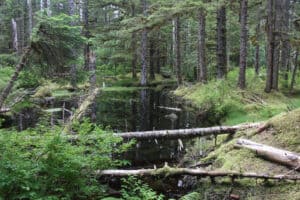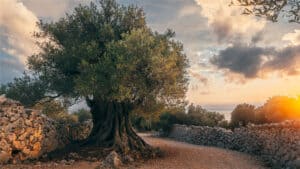Known for its hot, humid summers and mild winters, Alabama offers ideal growing conditions for lush, green lawns. The state falls within USDA Hardiness Zones 7, 8, and 9, indicating warm weather and moderate winters. This climate also favors warm-season grasses that thrive with proper care. Read on for the top recommended best grass types that thrive in Alabama for resilient, attractive lawns:
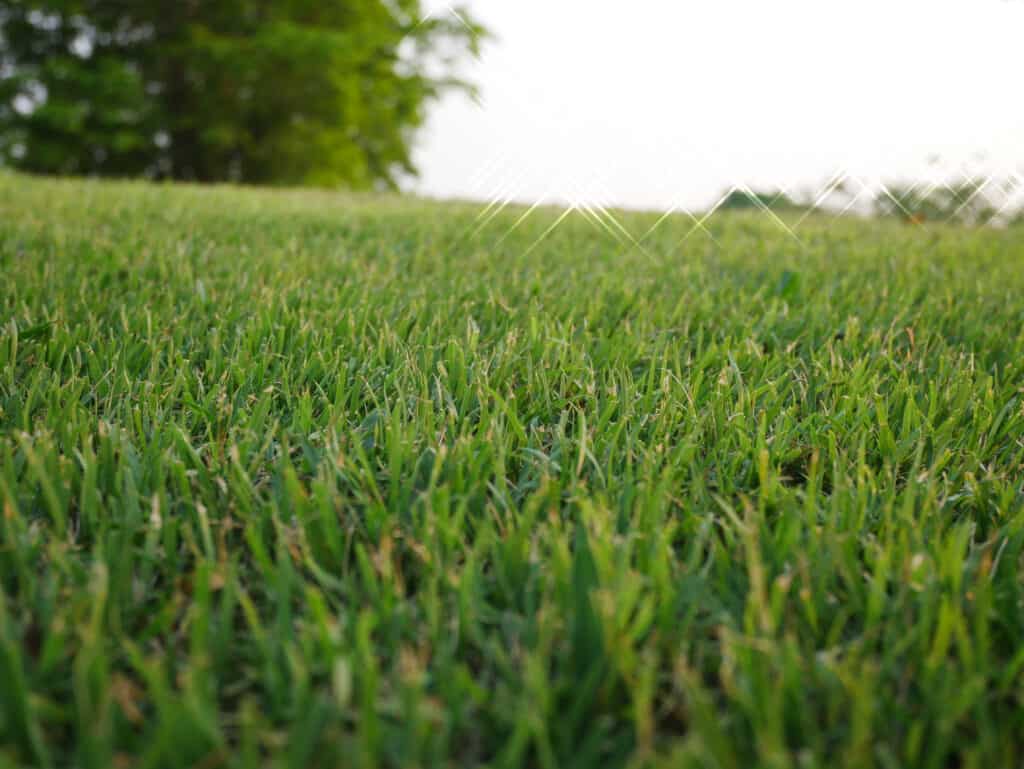
Bermuda grass is great for high traffic areas.
©Joyjiraporn/Shutterstock.com
Bermuda Grass
A top choice for Alabama is Bermuda grass, an aggressive, high traffic tolerant variety that rapidly recovers from damage. This dense spreader also forms a resilient, emerald green turf perfect for the heat and humidity of Alabama summers.
Pros: Excellent wear tolerance, rapid fill-in of damaged areas, vibrant green color
Cons: Requires frequent mowing and care, browns off in winter
Maintenance: Mow at 1-2 inches, fertilize 4-6 times yearly, dethatch to prevent thatch buildup. Irrigate during droughts.
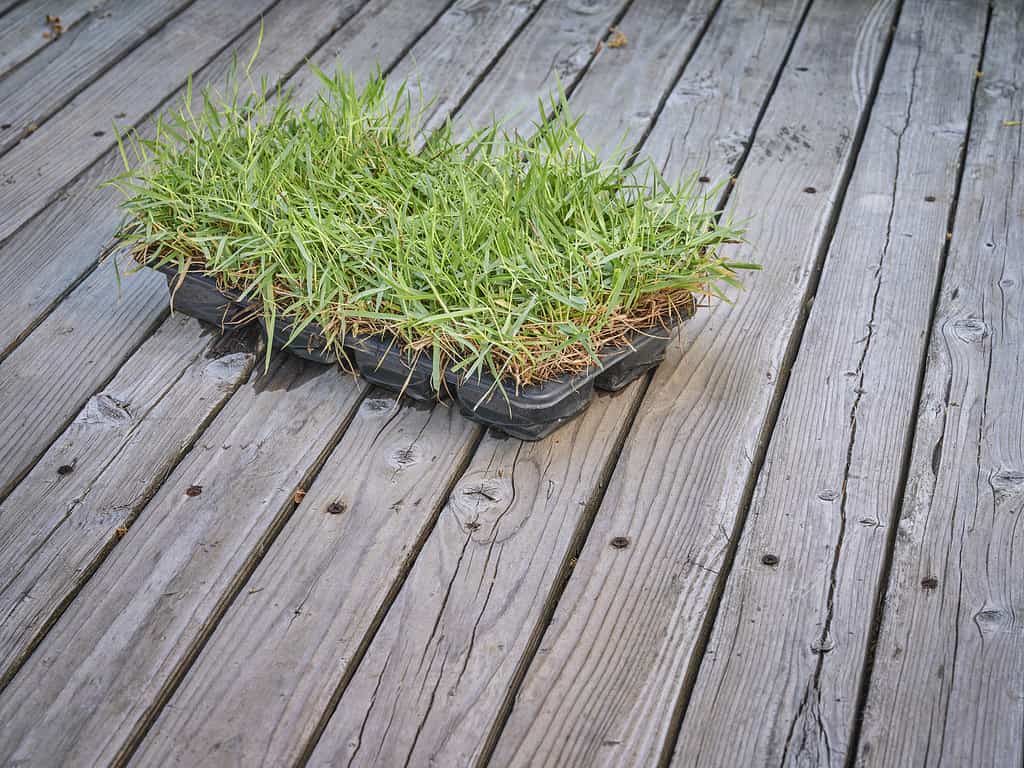
For a grass that resists weeds, zoysia is perfect.
©iStock.com/marekuliasz
Zoysia Grass
Zoysia, prized for its lush appearance and drought tolerance, is gaining popularity across the state. This fine-bladed grass establishes a dense, weed-resistant mat. Once found, Zoysia requires less frequent watering and mowing than some grasses.
Pros: Tolerates heat, drought, and traffic, dense growth resists weeds
Cons: Slow growing, browns off after the first frost
Maintenance: Mow at 1-2 inches in height. Fertilize 2-3 times per year. You should also dethatch and aerate periodically.
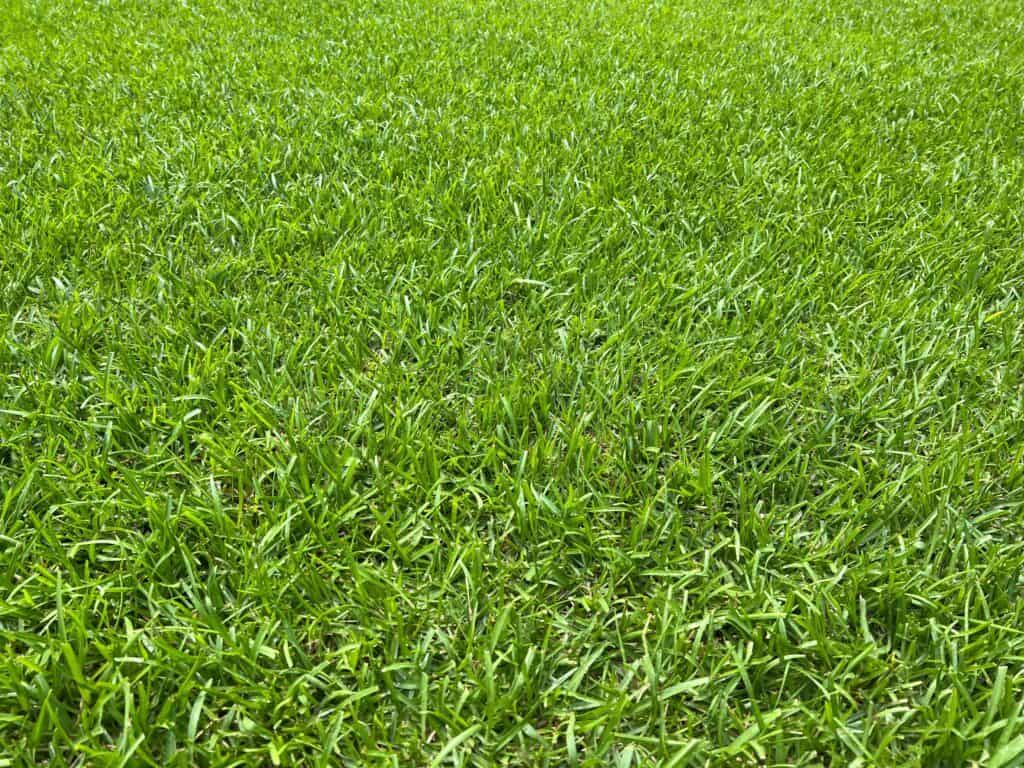
Centipede
grass is ideal for hot and humid conditions.
©Sherry Barr Photography/Shutterstock.com
Centipede Grass
For low maintenance lawns, Centipede is an excellent choice. This slow spreader retains its green color well into fall and requires little fertilizer. Centipede tolerates hot, humid conditions but may become thinner over time.
Pros: Good heat/drought tolerance, requires little fertility, color persists in fall
Cons: Not wear tolerant, prone to bare patches, lighter green color
Maintenance: Mow at 1.5-2 inches. Fertilize twice yearly. Additionally, overseed to fill in bare areas.
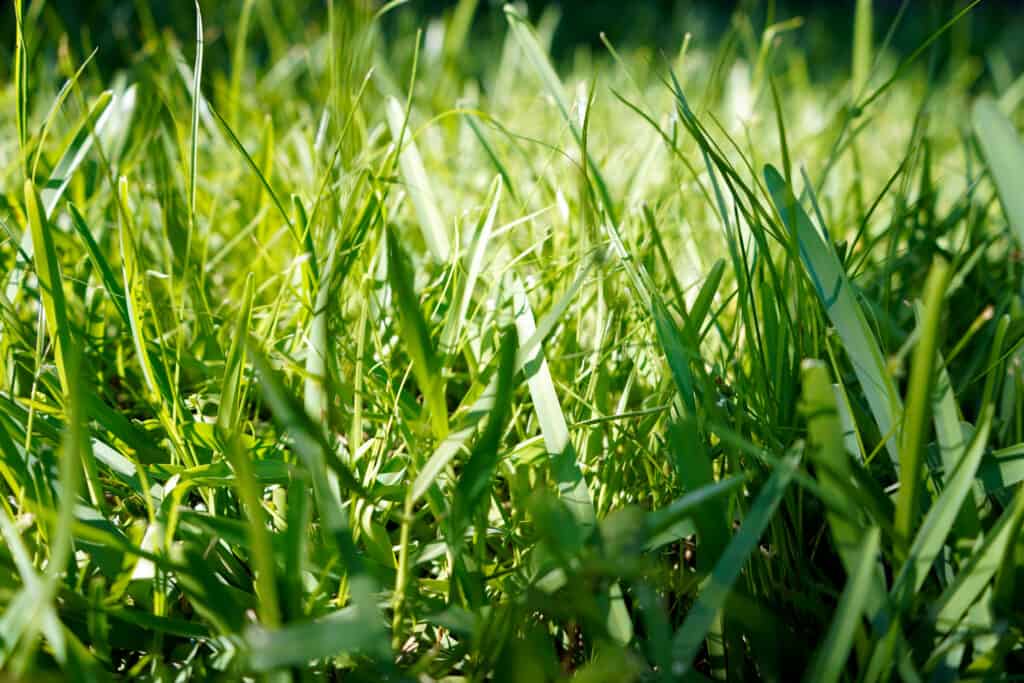
St. Augustine grass is known for aggressive growth and tolerates the shade.
©JennLShoots/Shutterstock.com
St. Augustine Grass
Prized for its lush, exotic appearance, St. Augustine thrives in Alabama’s heat and humidity. This aggressive spreader produces a thick, blue-green lawn and handles shade well. It is also susceptible to specific disease problems with inadequate care.
Pros: Lush, attractive turf, aggressive growth, shade tolerant
Cons: Frequent disease issues, thatch management required, higher maintenance
Maintenance: Mow at 2-4 inches in height. Fertilize 3-6 times per year. Heavier watering requirements. Monitor for fungal diseases.
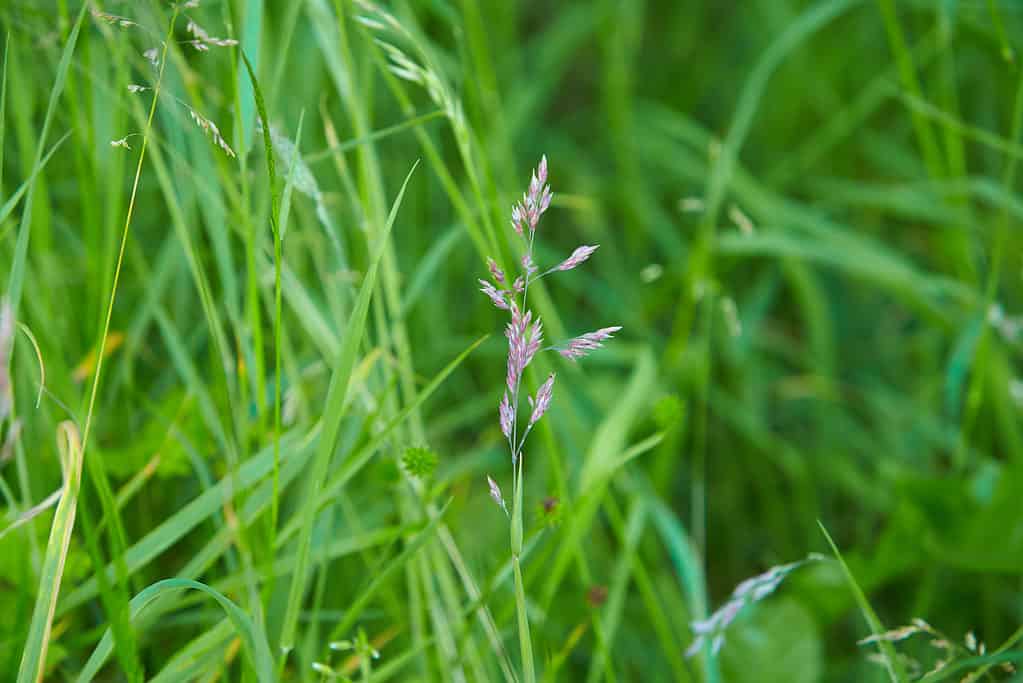
Fescue grass has low maintenance needs.
©iStock.com/Irina Pislari
Fine Fescue
For green winter color in shady spots, fine fescues like Hard Fescue persist even through Alabama’s warm summers with proper care. Additionally, their low growth habit requires little mowing or irrigation.
Pros: Shade tolerant, low maintenance needs, provides wildlife habitat
Cons: Prone to disease pressure in hot, humid climates
Maintenance: Allow dormancy in the summer heat. Mow at 2-3 inches in height. Fertilize 1-2 times per year.
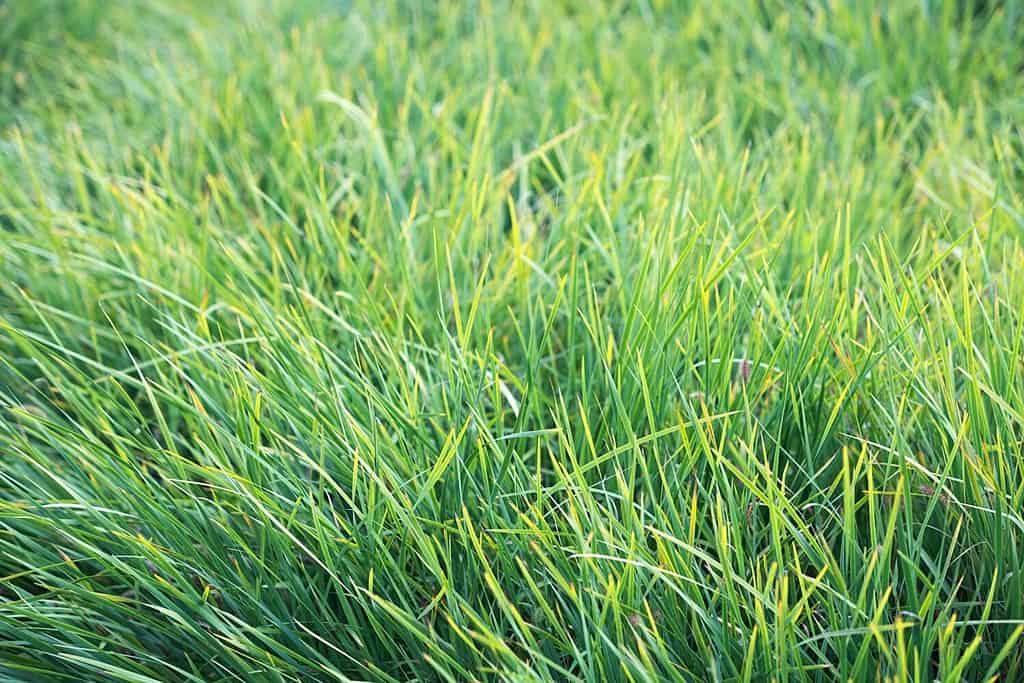
Rye grass is a finely textured type of grass.
©dajingjing/Shutterstock.com
Rye Grass
Fast-growing ryegrass makes the perfect temporary winter lawn or overseeded companion to warm-season grasses. This attractive turf greens up quickly but requires frequent replanting as temperatures rise.
Pros: Rapid green-up and growth, finely textured lawn, overseeds well into dormant grasses
Cons: Short-lived, requires heavy maintenance and reseeding
Maintenance: Mow at 1-2 inches. Fertilize for quick establishment. Irrigate for persistence. Reseed 2-3 times yearly.
Properly caring for the unique needs of each grass type will provide the lush, resilient lawns that thrive in Alabama. You can also consult local experts to match the ideal variety to your landscape conditions. With proper selection and care, Alabama lawns can stay vibrant green year-round.
Preparing Your Lawn for Success
Achieving a healthy, lush lawn starts with proper preparation before planting grass. Ensuring the soil and site conditions give your new grass the best chance at success is essential.
Start by testing your soil to determine pH and nutrient levels. Also, adjust pH to match your grass variety’s needs. Improving nutrient-deficient soils with compost or fertilizer provides a fertile starting point.
Grading the area to create positive drainage away from structures also prevents waterlogging. Level any extremely uneven spots or slopes. Installing drainage systems can divert excess water if the site doesn’t drain well naturally.
Before seeding, control any existing weeds. Herbicides or smothering with mulch eliminates competition. Inspect for insects like grubs and treat them if necessary. Proper site preparation allows your new grass to establish with minimal stress.
Mowing Tips for Best Grass Types That Thrive in Alabama
Proper mowing practices are vital for keeping your lawn green and healthy. Cutting grass too short causes stress and thinning. Follow the recommended height range for your specific grass type. For warm-season grasses like Bermuda and Zoysia, maintain a height of 1-2 inches. Also, cool-season grasses prefer 2 1⁄2 – 3 1⁄2 inches.
Use sharp, well-maintained mower blades to avoid damaging the grass. Dull blades tear the blades rather than cutting cleanly. Never cut off more than 1/3 of the total height when mowing to avoid scalping.
Mow frequently enough so no more than 1/3 of the grass height is removed each time. Higher mowing heights require less frequent mowing. Letting clippings decompose returns nutrients to the soil. Alternate mowing direction each time to avoid ruts. Proper mowing keeps your lawn lush and green.
| Types of Grass that Thrive in Alabama | |
|---|---|
| #1 | Bermuda Grass |
| #2 | Zoysia Grass |
| #3 | Centipede Grass |
| #4 | St. Augustine Grass |
| #5 | Fine Fescue Grass |
| #6 | Rye Grass |
The photo featured at the top of this post is © Belajar Ceria/Shutterstock.com
Thank you for reading! Have some feedback for us? Contact the AZ Animals editorial team.




